Designing for Healthcare
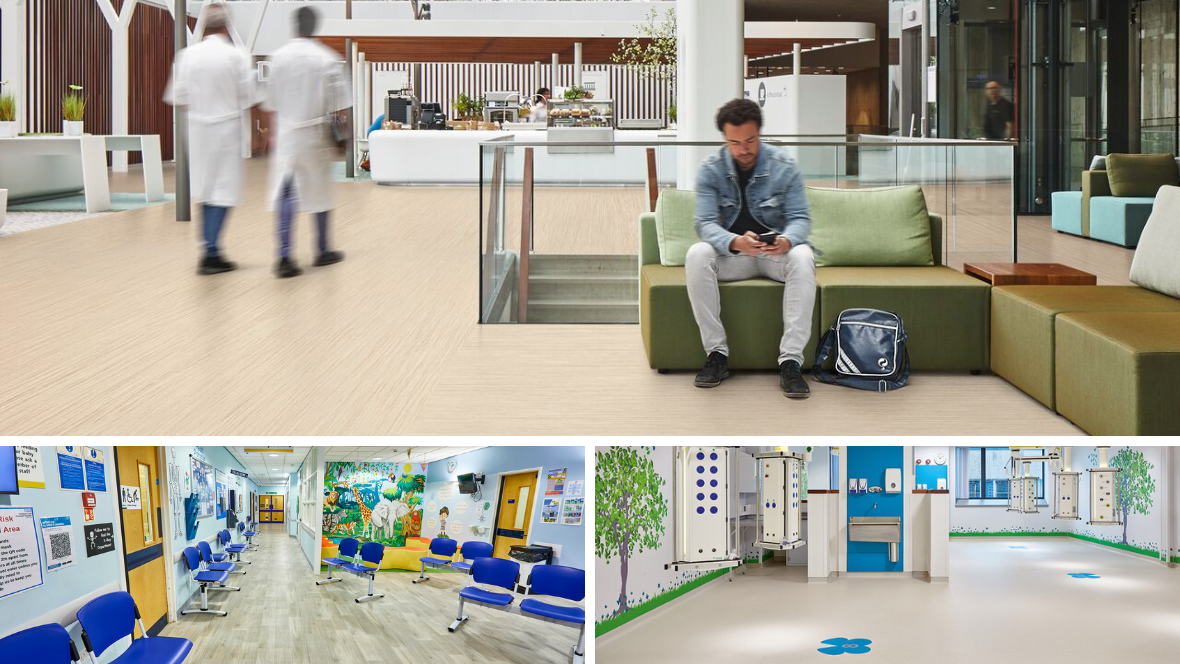
For healthcare buildings, both the design of the interior spaces and the materials chosen play an important role in supporting the health and wellbeing of those who use the building. These decisions can also have a significant impact on the maintenance requirements and costs. Here Sharron Kapellar, our National Framework Manager, considers how the flooring can help create a comfortable and healing environment.
A significant and growing body of evidence shows the clear benefits of good design on the health, wellbeing and experience of patients, their families and healthcare staff. Moving away from purely practical designs, many healthcare facilities are looking at how functional needs can be met while creating an environment that makes people feel at home – and there are several key factors that must be considered to achieve this:
Indoor air quality (IAQ) is affected by a variety of factors including temperature, humidity and the presence of contaminants, such as airborne chemicals and indoor allergens. Poor indoor air quality has been linked to a number of serious health conditions, including cardiovascular and respiratory diseases. Therefore, maintaining good IAQ is essential in healthcare settings, where people are most vulnerable to its effects.
One particular IAQ issue is Volatile Organic Compounds (VOCs). VOCs are a type of chemical that evaporate at room temperature and as such, contribute to indoor air pollution1. VOCs are emitted by many wall and floor coverings, furniture and appliances throughout their lifespan, and the negative health effects of these chemicals are well documented2.
As one of the largest surfaces in any building, selecting low VOC flooring solutions can contribute significantly to improving indoor air quality. Where possible, it is recommended that specifiers source products that do not contain softening agents such as phthalates, which have been found to negatively affect people’s health. In fact, certain linoleum products, such as our Marmoleum linoleum range, are manufactured to be free of VOCs and phthalates, and do not emit any chemicals or odours after installation.
Additionally, IAQ can be improved by selecting floor coverings that have achieved the Allergy UK ‘Seal of Approval’, such as our Flotex flocked flooring and Marmoleum collections. This certifies that, with the correct cleaning regime, the flooring will not harbour allergens.
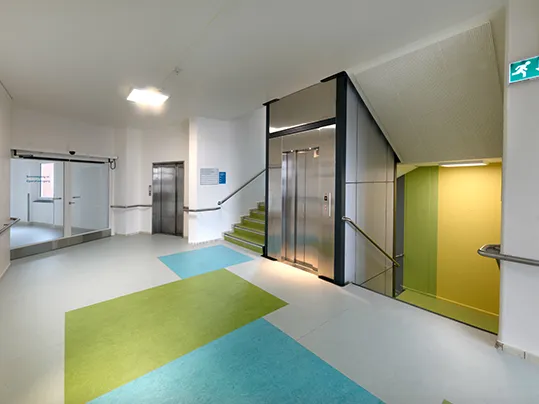
Marmoleum natural linoleum floor coverings
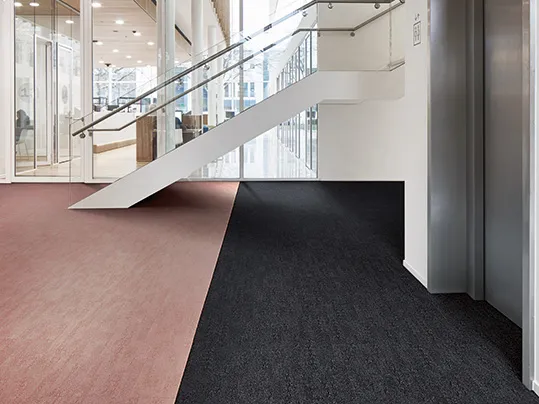
Flotex flocked flooring
Preventing slips and trips in a healthcare facility is vital to protect patients – especially those who are particularly vulnerable to falls – visitors and employees. In fact, according to the Health and Safety Executive (HSE), slips, trips and falls account for around half of all reported major injuries to employees in healthcare facilities.
With this in mind, it is vital to ensure measures are put in place to prevent accidents. While there are many practical processes that can be put into place, such as keeping floors free from obstructions, dirt and moisture, perhaps the best method is to install safety vinyl flooring – especially in areas where continuous contamination is expected, such as food spillages in canteens and kitchens or excess water in bathrooms and wetrooms. Forbo’s safety vinyl range, STEP, offers guaranteed lifetime slip resistance performance, whilst also being easy to clean and maintain due to its PUR Pearl finish.
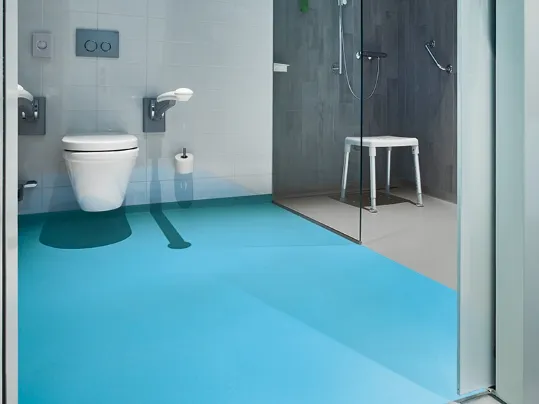
When designing healthcare facilities, it is important to create a welcoming and comfortable environment that puts patients and their families at ease. In fact, many healthcare organisations are favouring patterns, materials and designs that evoke a home-like feel, in place of the sterile or institutional aesthetics that were common in older buildings. The aim is to help ease the emotional and psychological impacts of hospital stays.
The correct choice of flooring has a significant role to play in achieving this. Selecting flooring with natural tones and textures, such as our new Marmoleum Linear collection, can help produce a calming, relaxing and welcoming atmosphere.
The Marmoleum Linear collection features softly striated designs, which evokes an expression of wood and is available in warm browns, cool greys, warm greys and other earthy tones.
Similarly, premium homogeneous vinyl flooring such as our new Sphera Element range can provide an attractive alternative to the typical flooring choices.
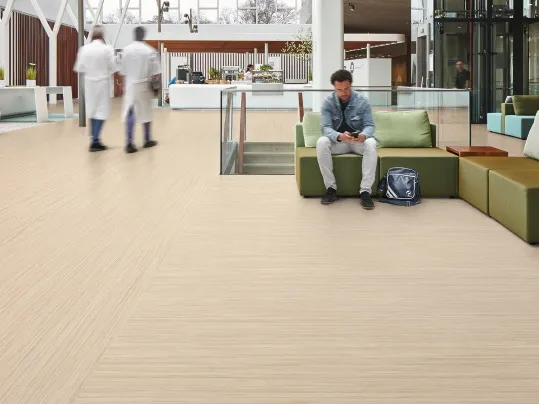
Marmoleum Linear
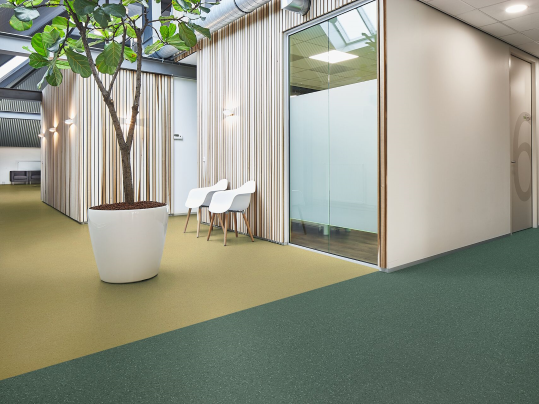
Sphera Element
One of the biggest challenges for flooring in busy healthcare facilities is durability. Areas such as corridors must withstand high levels of foot traffic as well as the frequent movement of beds and wheelchairs over the long term. Both high quality linoleum and vinyl flooring can provide a hard-wearing solution.
Finally, ease of cleaning is essential to ensure high levels of hygiene and infection control. Due to the materials it is manufactured from, our Marmoleum linoleum has bacteriostatic properties that do not diminish over time. Also, our SMART-top, Topshield and Xtreme PUR surface finishes, included in our Sphera Element, Marmoleum Linear and Sarlon/Modul’up collections respectively, make cleaning simpler as well as resisting staining and scratches.
Careful and considered selection of designs and materials can have a significant impact on the experience, wellbeing and health of patients and their families. Choosing the right flooring will not only help meet the functional requirements of a healthcare facility, but also contribute to creating a positive environment that alleviates stress and anxiety.
Click below to find out more about our range of flooring solutions for the healthcare sector.
Flooring solutions for healthcare